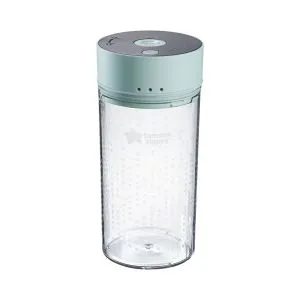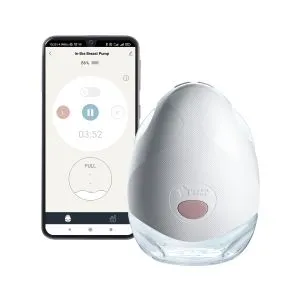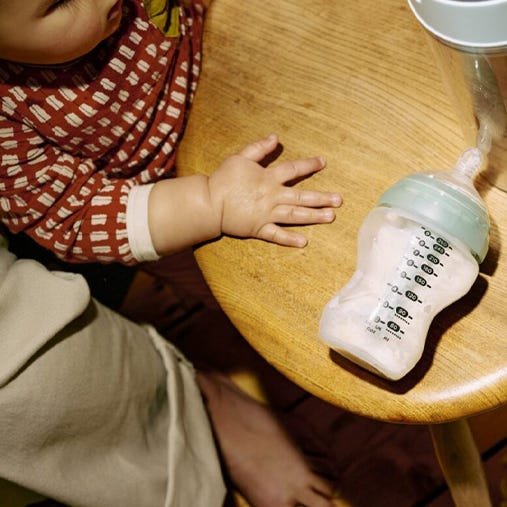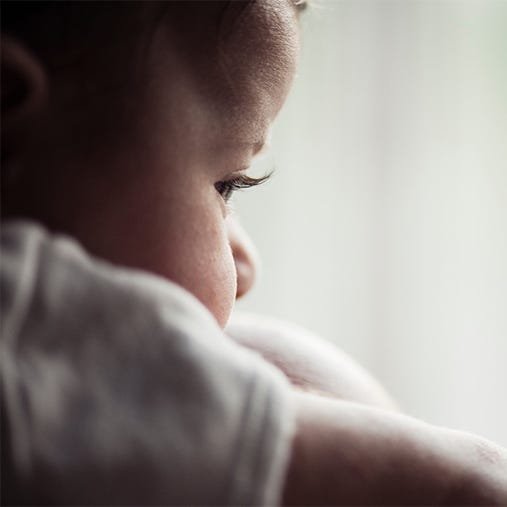As a parent, you'll no doubt know that little ones are naturally curious - and sometimes mischievous! While that can be endearing and charming, it also opens the door to several risks.
Little accidents are bound to happen now and then, it's all part of having a baby. But alongside teaching them about safety and leading by example, baby or child-proofing reduces the number of potential risks and dangers in and around your home. This helps to keep your baby safe so you have total peace of mind as they grow and explore.
Don't worry if you're feeling overwhelmed by the idea of baby-proofing and don't know where to start, we're here to run you through the baby-proofing process, one room at a time.
When to start baby-proofing
Don't panic, you don't need to baby-proof every part of your home before your little one arrives. Some things can wait until they're older and more mobile, but there are lots of factors to consider. You'll also be busy once they're born, so it can pay off in the long run to be prepared.
You can gradually begin during pregnancy (approximately three months before your due date) and aim to have tackled most of your baby-proofing by the time your baby can crawl.
General baby-proofing tips
We're going to cover how you can baby-proof different areas of your home in a little while. But first, let's look at some general tips that can apply to all rooms, and cover some of the essentials we think will help you to baby-proof your house.
- Install baby gates: Fitting these in doorways and on the stairs means you can keep certain areas off-limits to your child when they're not under your supervision.
- Buy a family first aid kit: As well as attending an infant first aid course, it's also a good idea to buy a first aid kit to keep at home that all the family can use. You may also want to stock up on some baby healthcare essentials to help you out if they're feeling under the weather.
- Cable management: It's a good idea to tidy away all loose cords and make sure things like lamps, blow dryers, heaters, and other electrical appliances are kept out of your baby's reach.
- Corner protectors: Any furniture with sharp corners should have foam or plastic protectors fitted to stop your baby from banging their face or head.
- Cupboard and wardrobe locks and latches: Child-proof latches should be installed to all opening furniture that your little one can reach.
- Electricity outlet covers: These can be fitted on all sockets that aren't in use to stop your little one from touching them with their tiny fingers.
- Fireguards: You should install fireguards in all fireplaces (gas, electric or wood-burning) to protect your little one from burns.
- Fit smoke alarms and carbon monoxide detectors: These should be installed in all homes and tested regularly to make sure they're working properly.
- Get down to ground level: When baby-proofing, it can help to get down on your hands and knees to see everything from your little one's perspective. Ask yourself "is there anything I can see that could be a danger to my child?".
- Keep dangerous objects stored away: This includes things like batteries, matches, e-cigarettes and lighters. These should always be kept safely and out of reach.
- Store small items away: Keeping your floors free of small objects that your baby could put in their mouth and potentially choke on is important.
- Move breakable objects out of reach: This includes things like glass vases, ornaments and any other delicate things that could be tinkered with by tiny toddler hands.
- Reposition or get rid of any house plants: This one may break your heart if you're a green-fingered house plant lover, but once your baby is more mobile, you should reposition all your plants so that they're out of reach. Also, get rid of any poisonous houseplants.
- Monitor your pets: If you've got any furry friends, make sure that you supervise all contact between them and your baby.
- Remove or secure rugs: When your baby turns into a full-fledged toddler who can walk, rugs can become a tripping hazard. It can help to create an obstacle-free environment for them to explore. If your rug is essential, add a sheet of rug-grip underlay beneath it to reduce the risk of slips and trips.
- Secure furniture in place: You should use furniture anchors to secure furniture (like bookcases, drawers, and dressers) to the wall and anchor flat-screen TVs with safety straps to stop them toppling over.
Baby-proofing your windows and doors
As babies grow, they become more curious and begin to explore further afield. That's why it's important to baby-proof your windows and doors.
- Child-proof window locks: These make sure that little ones can't open the windows. If you use them, you should always lock the windows when you close them, but make sure that all adults in the house know where the keys are kept in case of an emergency.
- Cordless window coverings: Blind and curtain cords can be a strangulation hazard. It's a good idea to shorten them or use a special safety device like a cord wind-up to keep them out of your child's reach.
- Install door stoppers and finger guards: These will save a ton of pain and tears by making sure that your child can't get their fingers, hands or feet trapped in a door as it closes.
- Move furniture from under windows: Toddlers and children can climb onto furniture to access open windows, so it's best to keep the space beneath any windows clear of furniture.
- Window restrictors: These let you leave a window slightly open for ventilation, but keep it closed enough so that no one can accidentally fall out. They shouldn't allow your window to open more than six and a half centimetres. Even when they're in use, you should never leave your baby or toddler unattended near an open window.
Baby proofing the bathroom
When you begin your baby-proofing journey, the bathroom is one of the rooms where you'll come across the most hazards. The following tips can help you to reduce the risks:
- Constant supervision: You should never leave your little one alone in the bath, even for a second. If you need to leave the bathroom, wrap them up in a cosy towel and take them with you.
- Locks on the toilet lid: Toilet seat locks stop young children from opening or slamming the lid, throwing things in the toilet, or touching any nasty germs.
- Non-slip bathmats: Surfaces in the bathroom can get slippy when wet, so using these mats will keep your baby safe before, during and after bathtime.
- Store medications out of reach: All your medicines, vitamins, and cosmetics should be kept safely out of your baby's reach.
- Tap covers: These are a bathtime essential and stop your baby hitting their head on the bath's hard metal spouts.
- Water temperature: It's a good idea to lower the temperature of your water thermostat to around 46°C to reduce the risk of scalds. You should always test the temperature of your baby's bath water using your wrist or a specially designed bath thermometer to ensure it's safe. Lowering your thermostat will also stop your radiators getting too hot and potentially causing injury.
Baby proofing the kitchen
The kitchen is full of hazards for curious little ones. But try not to worry, there're lots of ways you can reduce the risks of accidents.
- Avoiding dangling tablecloths: Little hands could potentially pull a tablecloth off, along with anything that's on the table.
- Cleaning products: You'll need to ensure you're storing your cleaning products and household chemicals safely and out of reach. It's a good idea to use non-toxic cleaning products where possible, especially when you're wiping down things like your baby's highchair.
- Hob safety: Whenever you're cooking up a storm in the kitchen, use the back rings on the hob. Also, turn any pot or pan handles inwards so that your little tot can't grab and pull them off.
- Keep alcohol out of reach: Just like cleaning products, you should keep all alcoholic drinks stored away safely and out of your baby's reach. This point is particularly important when it comes to curious toddlers.
- Move glass, chinaware and knives and other sharp kitchen tools away: This one is straightforward, you don't want your child to be able to reach anything that could be dangerous.
- Make sure they can't get hold of plastic bags: These can pose a suffocation risk, so it's a good idea to store them somewhere safe or get rid of them altogether.
- Highchair safety: You should position your baby's highchair away from other safety hazards. Make sure that you always use the chair's safety straps as these stop them from slipping down, standing up, or falling out of their chair.
- Unplug appliances when not in use: Unplugging and switching kitchen appliances like the kettle off when they're not being used and tucking away any loose cords helps stop your toddler from accidentally turning them on or pulling them off the kitchen bench.
- Use child locks on kitchen appliances: This includes the oven, fridge, washing machine and dishwasher. You should add a childproof safety catch to these kitchen appliances for extra peace of mind and to keep your curious toddler safe.
Baby proofing toys
Although lots of fun, baby and toddler toys can sometimes break and become dangerous. Follow these tips to keep your mini-me safe as they play:
- Avoid small toys: While your child is still young, it's a good idea to choose age-appropriate toys that don't feature small parts that could potentially become choking hazards.
- Quality control: You should check your child's toys regularly (especially if they're well-loved) to ensure that they're intact and all parts are secure.
Baby proofing the nursery
Little ones should sleep in the same room as you for the first six months of their life. But when the time comes for them to move into their own room, you'll want to consider the following baby-proofing steps to keep them safe as they sleep:
- Baby monitors: Baby monitors have lots of benefits and are great for reassuring you that your little one is sleeping soundly.
- Changing table: It's safest to change your baby's nappy on a changing mat on the floor. But if you use a raised table to change your baby, you must never leave them unattended and choose a table with raised sides so they can't roll off.
- Cot safety: Make sure your baby's cot is free of suffocation or strangulation hazards, and that it's fitted with a firm and snug-fitting mattress. Babies shouldn't sleep with soft bedding, bumpers, loose blankets, soft toys, or pillows because they can cause suffocation and strangulation.
Baby-proofing outdoor spaces
Once you've covered the inside of your home, it's time to head outside and look at your garden or yard if you have one.
- Gardening equipment: From your lawn mower to your shovels, spades, and weed killers, be sure to keep all garden equipment stored away in a locked shed.
- Hazardous plants: You should check your garden regularly to make sure any mushrooms and poisonous plants are removed. When your little one is old enough, teach them not to pick or eat anything they find outdoors without asking you first.
- Outbuilding safety: If you've got a shed in your garden, make sure it's secure and well-built. If you have a greenhouse, it's a good idea to check that it's made using safety glass.
- Play equipment: Any outdoors toys or play equipment should be age-appropriate, in good condition, properly assembled and positioned safely.
- Road access: Make sure that all entrances and exits (including gates and fences) to your outdoor space are secure so that your little one can't get onto the road when they're playing outdoors.
- Water safety: When they're near water, you should make sure that your child is always within arm's reach to reduce the risk of drowning. Any standing water - including ponds, barrels, and water features - should be covered or fenced off, and paddling pools, buckets and containers stored away so they can't collect rainwater.









